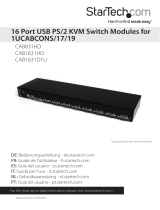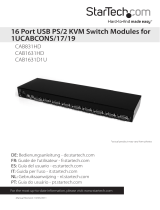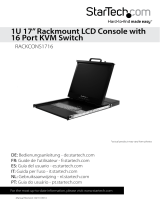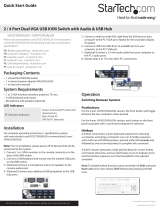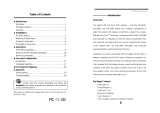
Instruction Manual
10
First, use the <UP> and <DOWN> arrow keys to
highlight it, then press <F2> to switch it’s eye mark
on or off. If Scan Type is ’Ready PC + N’, only the
power-on and eye mark selected computers will be
displayed sequentially in Scan mode.
Function key <F3>: To lock a device (a computer or a slave) from
unauthorized access, use Security. Security is
effective for only one device (a computer or a slave).
Use the <UP> and <DOWN> arrow keys to highlight
it, then press <F3>. Now, enter up to 4 characters
(‘A’~’Z’, ‘0’~’9’, ‘-’) followed by <ENTER> as new
password. A Security enabled device is marked with
a lock (Ï ) following its channel number. To
permanently disable the security function from a
locked device, highlight it, press <F3> then enter the
password.
If you want to access the locked device
temporarily, simply highlight it and press <ENTER>,
the OSD will ask you for the password. After entering
the correct password, you are allowed to use the
device. This device is automatically re-locked once
you switch to another port. During Scan mode, OSD
skips the security-enabled device.
NOTE: If you forget the password, the only way to permanently erase all
of the passwords is to press and hold the 1 and 2 front panel buttons,
then hold 7 and 8. Release 7 and 8, then release 1 and 2.
Function key <F4>: More functions are available by hitting <F4>. A new
screen pops up displaying more functions as
described below. Most of them are marked with a
triangle (►) indicating there are options to choose
from. Using the <UP> and <DOWN> arrow keys,
select the functions and press <ENTER>. Available
options will be shown in the middle of the screen.
Again, use the <UP> and <DOWN> arrow keys to
view options then press <ENTER> to make your
selection. You can press <ESCAPE> to exit.




















